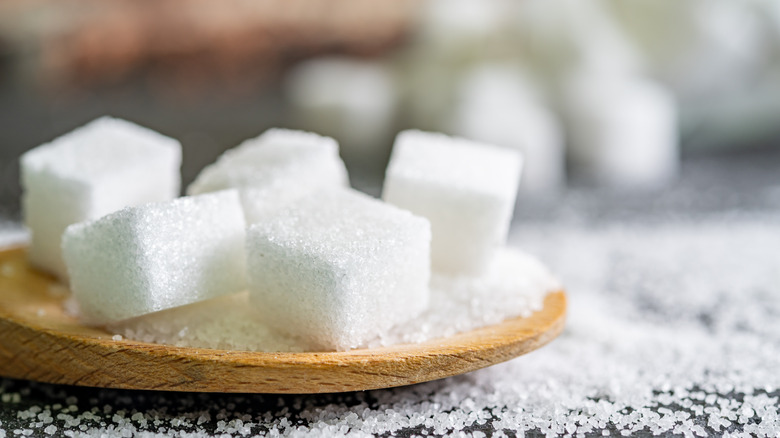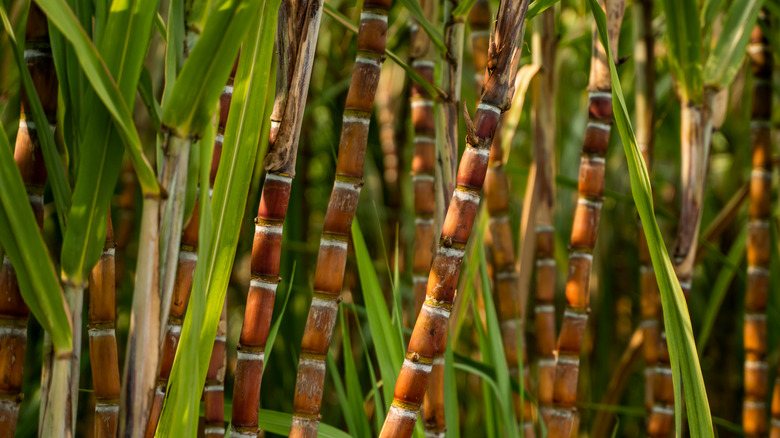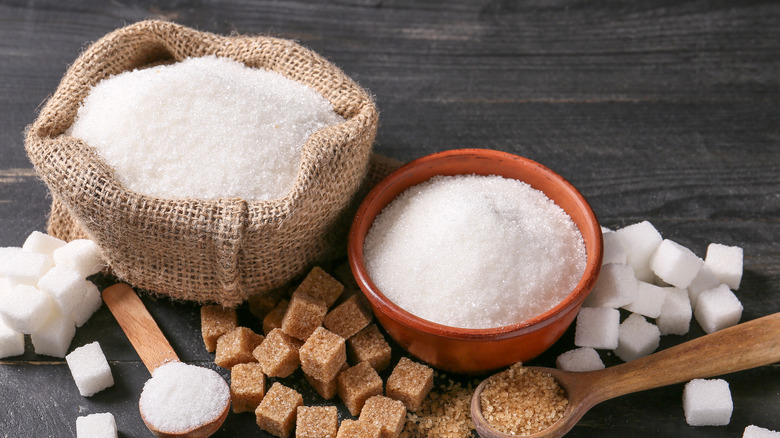The Country Where Sugar Was First Refined
It is safe to say that the world is hooked on sugar. The human body loves the taste of sweet-tasting things; it is an inherently primal inclination, so whether our food has honey, brown sugar, maple syrup, or agave, our taste buds light up and tell our brains: We like this! Give us more. It is why desserts are such an important and admired part of our culinary experience. We watch baking shows in awe of how contestants manipulate sugar into cakes, pies, cookies, crème brûlées, toffy, brittle, ice cream towers, and so on. There really is no limit to what we are willing to sprinkle sugar into.
Sugar is an integral part of our lives, which is a great thing for our taste buds, but it can negatively impact our health. Since the introduction of refined sugar into our ancestor's diets, there have been records of obesity, tooth decay, and an otherwise terrible deterioration of people's health (via Smithsonian Magazine). But refined sugar wasn't always a staple in humanity's diet. So, where did it come from, and how did we discover its abilities?
Where does our sugar come from?
Many of us who use sugar in the kitchen don't really think of it as anything but soft white crystals brought to us in neat bags. We don't consider the journey sugar makes to reach us, and if you quizzed us, most probably couldn't even tell you how sugar is made. Luckily, Britannica has the answers. According to the online encyclopedia, sugar cane (saccharum officinarum) is technically a grass grown in subtropical and tropical areas.
Imagine tall bamboo-like green stalks sprouting in fields, and you'll have a pretty good idea of what they look like. And while the cane is sometimes chewed on like gum, it is primarily harvested to extract its juice for white sugar production. The sugar cane is then crushed to release its juices which are then filtered and boiled into syrup until crystallized (via Michigan State University). The entire process is more complicated, but hopefully, that gives you a better understanding of the sugar tucked away in your cupboard.
The history of the sugarcane in India
Today, sugar cane is one of the world's most prolific crops, with 26,942,686 hectares around the globe dedicated to farming it (via The Conversation). The sheer amount of sugar cane produced is a testament to our addiction to the sweetener. But sugar wasn't always so easily accessible. According to Saveur, before the discovery of sugar cane in New Guinea (a Pacific island North of Australia) around 8,000 BC, we used honey to sweeten things. But a few thousand years later, sugar cane made its way to the Philippines and eventually to India, where it would first be transformed into the white crystallized sugar we recognize today.
The Sugar Cane Industry by J. H. Galloway reports that the words guda, "to make into a ball" and śarkarā "grains or practicals” appeared in a manual written sometime before 300 BC, though less official documentation may indicate that sugar was being refined sometime before 500BC. The English word "sugar" can be traced back to the Sanskrit use of "śarkarā" when referring to processed sugar cane. Sugar is still widely grown all over India because of the country's ideal warm and humid climate (via Farmer's Portal).


